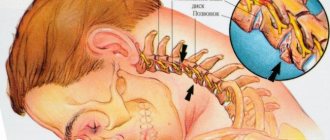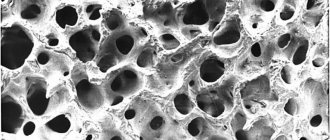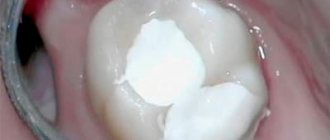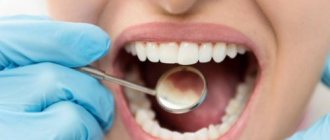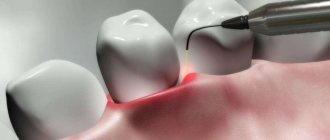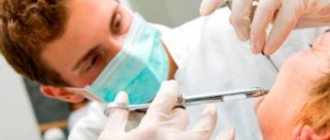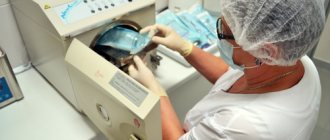Electrophoresis for osteochondrosis of the cervical spine is an effective method of treatment, characterized by a gentle effect. It is used in modern medicine quite often, which is associated with the absence of complications and side effects. Treatment of cervical osteochondrosis with electrophoresis in most cases avoids surgical intervention.
Electrophoresis for osteochondrosis of the cervical spine
What is the treatment procedure?
The main advantage of the electrotherapy method is painlessness and lack of discomfort, which distinguishes it from injections and swallowing tablets. Medicines, transformed into ions, enter the patient’s body through intact skin or mucous membranes under the influence of direct or pulsed current. The effectiveness of treatment is due to the simultaneous influence of two factors on the body: medication and current.
Electric current allows you to speed up metabolic processes in the human body. Administration of drugs through ionotherapy has a number of advantages over delivering them intramuscularly, intravenously or orally:
- creating a long-lasting effect from the administration of the drug due to accumulation in the subcutaneous fatty area and slow consumption;
- no side effects;
- painless delivery of the drug to the desired area of the body;
- no tissue damage during drug administration;
- reducing the dose of the drug.
From a physics point of view, the procedure is the process of decomposition of an electrolyte into ions when it interacts with water (dissolution) or under the influence of high temperatures (melting). In an aqueous solution, the drug breaks down into ions, which, under the influence of current, begin to move and enter the body through the mucous membranes and skin. Then the ions are evenly distributed in the cells and in the intercellular fluid.
The amount of drug absorbed from the solution during electrophoresis depends on many factors. Among them: the patient’s age, the condition of his skin, current density, the amount of substance in the solution, etc.
During the procedure, the patient will not feel discomfort or pain. Electrophoresis is prescribed to both adults and children, as it is absolutely harmless and effective for treating a number of diseases. Another positive point is that drugs administered under the influence of current do not penetrate deeply, but remain in the subcutaneous fat layer, so they have a longer lasting effect on the body.
Numerous studies have shown that the procedure increases the skin's sensitivity to medications, which increases their activity. Electrophoresis is also prescribed for infants. It is better to carry out the procedure at home, since there may be patients in medical institutions.
Benefits of electrophoresis for children
It is very important that transdermal administration of drugs allows one to reduce the current dose of medication, reducing side effects and preventing possible allergic reactions. For example, 5–10% solutions of substances are used to introduce local effects, and 1–2% solutions are used for segmental reflex effects. Electrophoresis allows for the most targeted administration of medicine to the affected area, without painful and frightening injections for children. Also, the effect of the drug is extended over time, reducing its one-time concentration in the blood. This also happens because a temporary “depot” of the drug is created in the skin, which gradually enters the blood. The medicine can remain highly concentrated in the skin for up to 21 days.
Among the various drug delivery systems available today, the transdermal drug delivery system has shown the best results in improving the quality of life of young patients due to the main advantage: avoiding first-pass metabolism of the drug through the liver, which would significantly reduce the effectiveness of the drug. Other clinical benefits include controlled delivery of drugs, maintaining stable plasma concentrations without pain. The stratum corneum, which is the outermost lipid layer of the skin, acts as a barrier to the absorption of highly polar and hydrophilic drugs. The penetration or absorption of such drugs can be improved using various penetration enhancers (dimexide) and physical and mechanical methods. Nowadays, electrophoresis and iontophoresis have become very useful techniques that transport charged drug molecules across biological membranes and tissues using a weak electrical current.
Indications for electrophoresis
The electrotherapy method is prescribed to newborns from 4 months of age, when there are indications for the procedure. For infants, procedures are necessary in the treatment of hip dysplasia and neurological pathologies. Electrophoresis allows you to deliver medicine to the child’s body without intravenous injections. Often, to increase the effect of treatment, electrophoresis is prescribed along with massage. Both procedures are absolutely painless and do not cause any discomfort to the baby.
Electrophoresis at home is more effective than in a medical institution, since the child does not receive stress. He does not need to be taken to a children's clinic, where there are many sick children. Devices for carrying out the procedure are freely available. Before purchasing equipment for electrophoresis, consult your doctor; he should prescribe special medications that can be used in ion therapy. Electrophoresis, like any treatment method, has contraindications. The local pediatrician must notify them. It is not recommended to perform endonasal electrophoresis at home, as this is a complex procedure that affects the nasal mucosa.
How an electrophoresis session is performed in the clinic
Electrophoresis sessions are carried out in a special physiotherapy room.
What devices are used
The most popular device for carrying out the procedure is Potok-1. It has long proven itself in the market and does not lose its effectiveness and demand. This is what is used in most clinics.
But there are a large number of modern devices:
- Elfor;
- Nevoton;
- Mustang-Physio-GalvaFor et al.
Electrophoresis devices
The differences between them are minimal. All are easy to use, they have a compact shape and are affordable. The operation of any device is based on galvanic current, which flows continuously, with constant intensity, in one direction. But sometimes Trabert current is used. It has higher frequency, amplitude modulated currents that do not move in a straight line. They can pass sinusoidally, pulsate or change randomly.
Devices can also be equipped with:
- sinusoidal modulated currents;
- pulsed diadynamic currents (DDT);
- fluctuating current.
What types of intervertebral hernias are most difficult to treat?
4 stages of treatment for intervertebral hernia
Procedure
Before the procedure, the specialist prepares the apparatus and solution. You need to adjust the required current strength, which is selected by the attending physician. Electrodes are then attached to the patient with wipes moistened with a special liquid consisting of prescribed medications and water.
Gaskets are installed based on the location of pathological foci. They need to be attached as close to their center as possible. Due to this, the maximum positive effect is obtained.
Electrode location:
- For a cervical hernia,
the first electrode (+) is attached to the neck, the other (-) to the lumbar area. - In case of pathology of the thoracic discs
- (+) is attached to the thoracic spine, (-) to the lower back. - For a lumbar hernia
, the method of split electrodes is used: (+) attached to the lower back, split (two electrodes) (-) attached to the legs - in the back of the thighs or calves.
Then turn on the device and slowly increase the current based on the recommendations. This eliminates discomfort for the patient. During the first session, the electrodes are left on for only 10-15 minutes in order to observe the patient’s condition and completely eliminate negative consequences.
What should the current be?
The current strength for all types of hernias is on average the same. The device is set at 6 milliamps and gradually increased to 15. But these values may vary depending on the characteristics of the human body and the stage of the disease.
Session duration
The duration of the session for cervical hernias is from 5 to 15 minutes. When treating the thoracic and lumbar areas, the procedure will take an average of 20 minutes.
What should be the duration of the course?
The course for cervical hernias is 15 sessions, for pathologies of the thoracic and lumbar spine - 20. These are average numbers, the exact number is determined by a specialist, based on the needs and characteristics of the body. Procedures can be done daily or every other day. The main thing is to complete the entire course in order to achieve a positive effect.
How does the patient feel?
During the procedure, the patient may experience a slight tingling or warmth under the electrodes. Under no circumstances should there be pain or burning sensation. If they occur, the procedure is completed immediately.
The electrophoresis procedure is painless
Cost of electrophoresis
The cost of electrophoresis treatment consists of the cost of medications and the procedure. The average price of medicines is 70 rubles, and procedures – from 500 rubles.
Ion therapy is effective in treating a number of diseases:
Muscle hypertonicity in newborns . When performing electrophoresis, aminophylline is used. This drug increases blood circulation and promotes the growth of cartilage tissue.
Bronchitis . In case of illness, a procedure with calcium is prescribed. If there is a large amount of sputum, the patient is injected with calcium chloride using a current, and if there is a dry cough, calcium iodide is administered. Electrophoresis supplies the localized site of the disease with a drug that effectively fights the inflammatory process.
Pathologies of the joints and spine: arthrosis and osteochondrosis . The procedure is carried out using an anesthetic - novocaine. During the procedure, the main manipulations occur in the area where severe pain is localized. A gasket soaked in a 0.5% solution of novocaine hydrochloride is placed between the anode and the patient’s body. The standard course of treatment is at least 10 procedures. In case of severe pain, electrophoresis is prescribed 2 times a day for 15-25 minutes.
Skin diseases : melanoma, acne or furunculosis. In these cases, copper is used as a drug, as it has an anti-inflammatory and antitumor effect.
Keloid scars . Only scars at an early stage are treated with electrotherapy. To combat them, procedures with lidase are used. Sometimes this treatment is supplemented with electrophoresis with collagenase, since only with an integrated approach can the scar be reduced in volume or stop its growth.
Gynecological diseases associated with unsuccessful pregnancy. Treatments with zinc are prescribed. They are contraindicated on certain days of the monthly cycle, so they are not recommended without the approval of a gynecologist.
Intervertebral disc herniation . The disease is effectively treated with ionotherapy with Karipazim. This drug softens the hernia, so its effect on the nerve ending weakens and the pain goes away. The procedure will require two pads. Karipazim is applied to the first one and is connected to the positive pole of the device, and a heated 0.9% sodium chloride solution is applied to the second (it is connected to the negative pole of the equipment). The affected joint of the spine should be placed between the pads and current should be passed through it. Treatment of a herniated disc with electrophoresis is a long process. It will take 2-3 courses of 20-30 procedures every 1-2 months.
Increased uterine tone during pregnancy . The procedure is harmless for both the expectant mother and the baby. But if fears still creep in, then it is better to abandon electrophoresis during pregnancy and breastfeeding.
Pathologies of cardiovascular diseases . Calcium electrophoresis is performed.
With the help of electrophoresis, pathologies of the nervous, digestive, and genitourinary systems, sleep disorders, neuroses, migraines, burns, and a number of other diseases can be cured. Sometimes one drug is not enough to completely improve the patient.
Ion therapy cannot be used as an isolated method in the treatment of pathological processes in the body. It can be used as additional therapeutic procedures, for example: along with taking antibiotics. The dosage of drugs may vary. Children and the elderly are prescribed a reduced dose, which is one third lower than for the average person. Electrophoresis sessions should be carried out daily, perhaps every other day. The course of electrotherapy ranges from 10 to 30 procedures.
Despite the fact that there is no harm from electrophoresis, you should not self-medicate either. First you need to consult a doctor, namely, he should prescribe a drug or a set of drugs for electrophoresis.
Indications for procedures
Electrophoresis is prescribed to all patients diagnosed with a hernia who experience severe pain - an inevitable companion to this disease. Other indications depend on the type of protrusion.
Each type of intervertebral hernia has serious complications, so you should not delay treatment.
See how easy it is to get rid of a hernia in 10 sessions
Indications for electrophoresis for cervical hernia
For herniated intervertebral discs in the cervical spine, electrophoresis is prescribed for:
- dizziness and migraines;
- surges in blood pressure;
- weakness in the upper limbs;
- loss of sensitivity in the limbs;
- limitation of movement, muscle weakness.
Read more about cervical hernia in this article.
Indications for electrophoresis for thoracic hernia
For a thoracic hernia, electrophoresis is indicated for anyone who has:
- numbness, tingling in the upper extremities;
- limited mobility due to muscle hypertonicity.
Read more about the symptoms and treatment of thoracic intervertebral hernia here.
Indications for electrophoresis for lumbar hernia
For a lumbar hernia, electrophoresis is prescribed if the following symptoms are present:
- tingling sensation, numbness of the lower extremities;
- problems with urination;
- the feeling that “your legs won’t obey you.”
Read about other symptoms in the article “Intervertebral hernia of the lumbar spine.”
Contraindications to ion therapy
Electrophoresis has contraindications. Before you begin the procedures, you need to familiarize yourself with them. These include:
- pustular infections on the skin;
- malignant neoplasms;
- kidney disease;
- bronchial asthma;
- inflammatory processes in the acute stage;
- allergy to the drug that must be administered during electrophoresis;
- blood clotting disorder;
- intolerance of the body to electric current;
- heart or kidney failure, etc.
Why do people come to us for calcium electrophoresis?
Our specialists treat each patient carefully. When prescribing a procedure, they take into account:
- person's age;
- nature of the disease;
- general health;
- presence of pathologies;
- individual characteristics of the body.
Based on this, the dosage of the drug, the current strength and the exposure time are determined. This approach allows you to get the maximum effect from the procedure and avoid discomfort. If the patient feels a burning, tingling or itching sensation, the doctor reduces the current intensity.
We take this procedure responsibly, so we do not prescribe it to people who have contraindications. In particular, electrophoresis is prohibited when:
- high temperature;
- oncological diseases;
- poor blood clotting;
- renal, cardiac and liver failure.
What should you remember when performing electrophoresis at home?
Electrophoresis can be done at home only after consulting a doctor. Make sure you have no contraindications to the procedure. Otherwise you will treat one thing and “criple” the other. You can start ion therapy only after thoroughly studying the instructions, correctly installing the electrodes and preparing the necessary solutions in certain proportions and quantities. It is not recommended to do more procedures than the doctor prescribes, since the absorption of drugs may decrease.
Before the first procedure, get a prescription from your doctor with the dosage of the drug according to the course of treatment. It is advisable to invite a nurse to clearly demonstrate electrophoresis, and then repeat her actions.
Electrophoresis with calcium
Electrophoresis with calcium chloride is prescribed for various diseases. This procedure is very effective, and results appear faster than from pills and injections. Doctors at Polyclinic+1 on Tretyakovskaya have extensive practical experience and use modern equipment.
During electrophoresis, drugs containing calcium are exposed to electrical impulses. Thanks to this, they easily penetrate the skin. Such an important element as Ca can accumulate, after which the human body uses it as needed.
Contraindications and side effects
Since electrophoresis achieves a fairly strong effect, which is combined with the pharmacological effect of the drug, the technique has a number of contraindications. These include:
- tendency to thrombosis;
- hypotension;
- arrhythmias;
- serious condition of the patient;
- individual intolerance to exposure to electricity;
- fever of any etiology;
- low blood clotting rates;
- tuberculosis in the active stage;
- presence of mental disorders (manic-depressive syndrome, schizophrenia);
- serious diseases of the nervous system, including epilepsy;
- pustular skin diseases (furuncle, carbuncle, pyoderma, etc.);
- neoplasms of any nature, including fibroids;
- pregnancy;
- the initial phase of the menstrual cycle, accompanied by blood loss;
- heart failure in the stage of decompensation;
- availability of electronic prostheses;
- viral hepatitis in the acute phase;
- tendency to bradycardia;
- serious pathologies of the kidneys and liver;
- damage to the skin at the electrode locations.
If there are one or more contraindications, the procedure is not carried out until they are eliminated, if possible. If the patient is an infant, you need to carefully select the dose so as not to cause harm due to too high a concentration of the drug. In this case, the benefits of electrophoresis should exceed possible complications.
If the time or strength of exposure is chosen incorrectly, as well as with individual intolerance, side effects may occur. These include:
- dyspepsia (nausea, vomiting, constipation, diarrhea, heartburn);
- bradycardia (decreased heart rate);
- hypotension (low blood pressure).
When prescribing electrophoresis and selecting a dosage, it is necessary to take into account not only the age, but also the general condition of the patient, his mental status, the presence of concomitant diseases, allergic reactions to drugs, as well as the stage and dynamics of the pathology.
Mechanism of action
During the procedure, the patient’s body has a positive effect on two sides at once: stimulation with galvanic impulses and the direct effect of the drug. That is, drug electrophoresis has a complex effect on the body, simultaneously irritating receptors and increasing the degree of drug perception, as well as allowing ions into the body, which give a pharmacological effect.
In addition to the local effect on cells and tissues, electrophoresis triggers general autonomic reflexes. They can be caused from absolutely any area of the skin in which sensitivity is not impaired.
For a positive result of therapy, the placement of electrodes in the area of the diseased organ is not required.
This method is used to introduce CaCl2 and other drugs, the ions of which are normally present in the human body. At the same time, at the site of exposure, blood circulation and lymphatic drainage, metabolic processes are enhanced, and histohematic barriers are opened. This ensures the distribution of the drug throughout the body.
For electrophoresis, the current density is set to 0.01-0.1 mA/cm2. The exact figure depends on the area of the pad and the selected medicinal substance. The duration of the session is from 10 to 20 minutes, but can be extended to 60 minutes in special cases. The course consists of 15 to 20 visits, which are carried out every day or according to an individual schedule. If the patient requires more procedures, then after 30-60 days of rest he is again referred to physical therapy.
